#mourning fashions
Explore tagged Tumblr posts
Text

Illustrierte Frauenzeitung, 1897 by pastlivesfinery
115 notes
·
View notes
Text
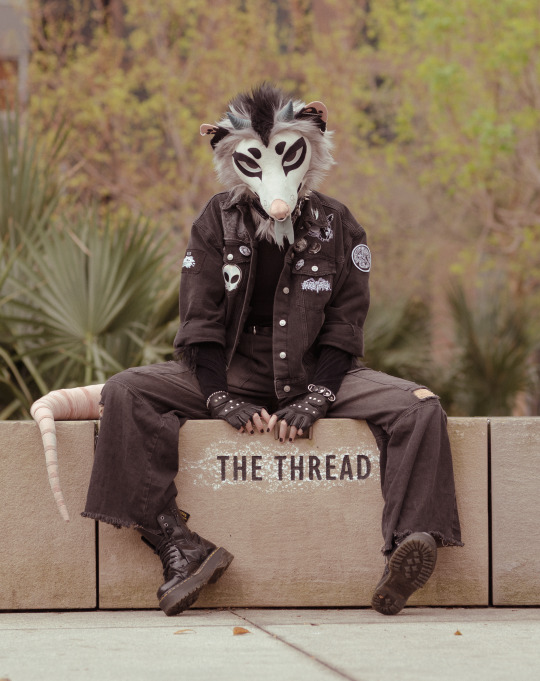

𝔱𝔥𝔢 𝔱𝔥𝔯𝔢𝔞𝔡
#photo by pixelderg @ twitter#furry#anthro#photography#mourning star#possum#fursuit#art#photo#fashion
17K notes
·
View notes
Text
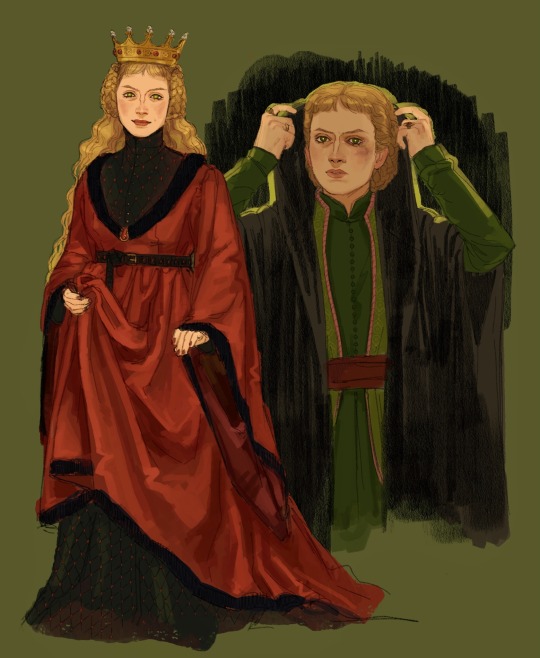
Queen Cersei Lannister
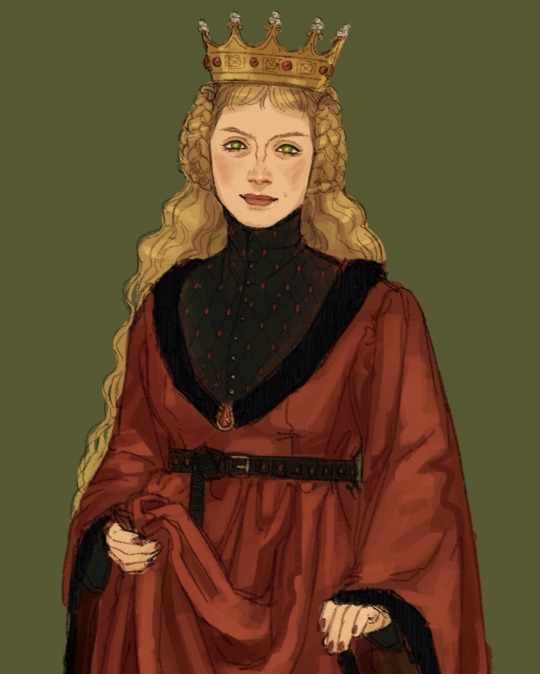
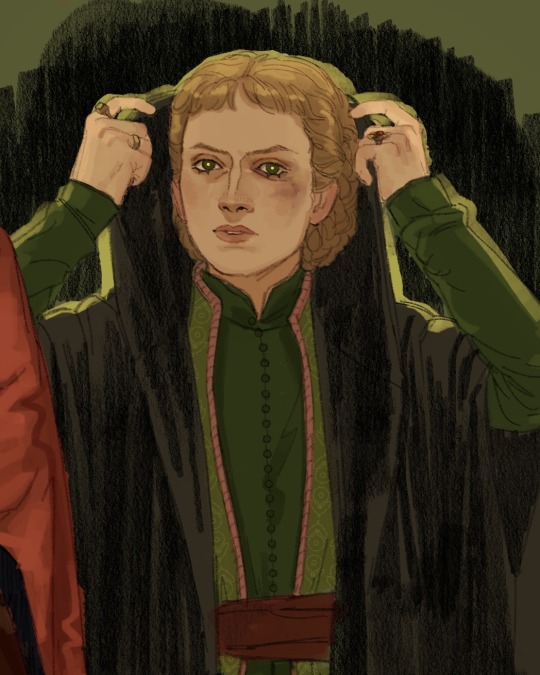
absolutely never would have anticipated how many times i’d end up drawing cersei when I first started asoiaf but over time she has cemented herself as one of my favorite characters…
i’m forever revisiting my own designs, so here’s a second attempt at Cersei’s ruby mourning dress and a first attempt at her in her hunting greens when she goes to meet with Ned. I think hunting greens implies menswear, but I’m not certain and I could be misinterpreting…? either way I think it is more reasonable for trying to be stealthy so that’s the route I took…
#asoiaf#valyrianscrolls#cersei lannister#my art#I like this interpretation of the mourning dress better even though it’s less accurate. it fits better w the style of briennes dress#kind of a fusion of a gown and a houppelande. a little silly but I think it works#personally I don’t like tudor asoiaf fashion I think its too modern but that’s just me. so i’ve tried to make the descriptions work within#the scope of more medieval styles#or at least. fantasy medieval styles#I had a sketch of her post walk of atonement on this page but I couldn’t color it right so I abandoned it for now#maybe i’ll finish it later
2K notes
·
View notes
Text

…Mourn Watch themed calendars with their staff when?
Was just looking at more modelling photoshoots and couldn’t help myself oops. 🫣
#dragon age#dragon age the veilguard#DAtV#Emmrich volkarin#my art#after 200+ doodles I tend to run out of ideas for poses#so I like to look at fashion photos#now it’s Emmy’s turn to be subjected to my model doodles ahaha#sorry perhaps#or not hehe#mourn watchers getting him to pose for art#imagine a vorgoth one#brain is just brrrrr after this#happy dragon age day here take this
2K notes
·
View notes
Text


One Of Queen Victoria's Mourning Dresses, British, 1894-95
From the Met Museum
#mourning#mourning dress#dress#fashion#fashion history#history#queen victoria#british#1894#1895#1890s#1800s#19th century
682 notes
·
View notes
Text

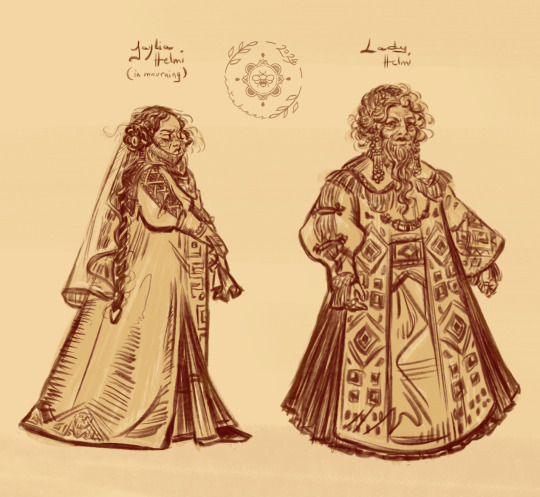

Dwarven ladies are an underrepresented demographic in Dragon Age and I'm here to fix that
#has anybody ever thought about orzammarian fashion#orzammarian? orzammare? orzammarish#Queen aeducan is fully my concept for Verena's mom#and an excuse to draw an art deco wheelchair#Jaylia Helmi was Trian's betrothed she's in mourning because of that she probably doesn't feel overly sad but it's etiquette#Jaylia helmi#Lady helmi#Aeducan#Rica Brosca#dragon age#dao#orzammar
613 notes
·
View notes
Text
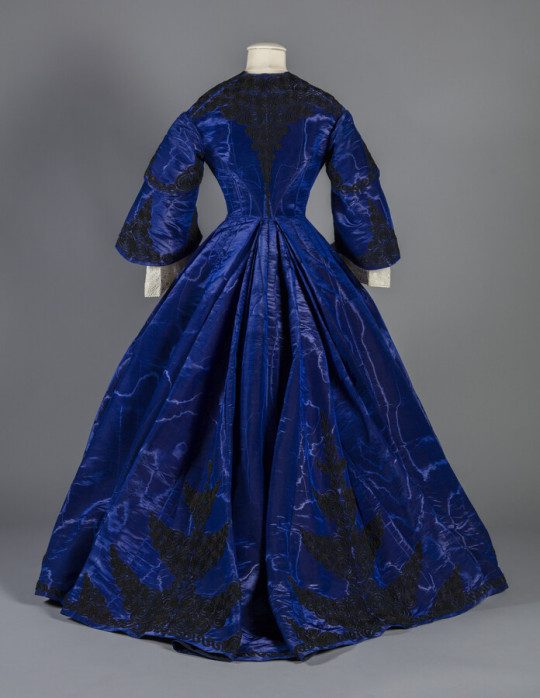
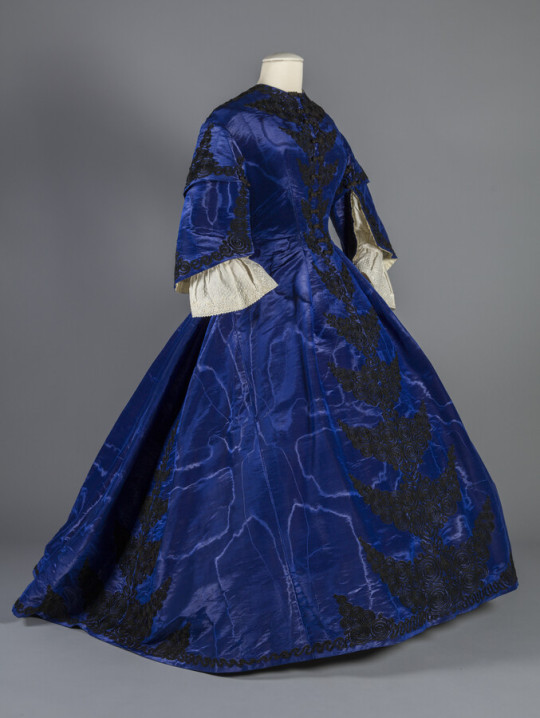
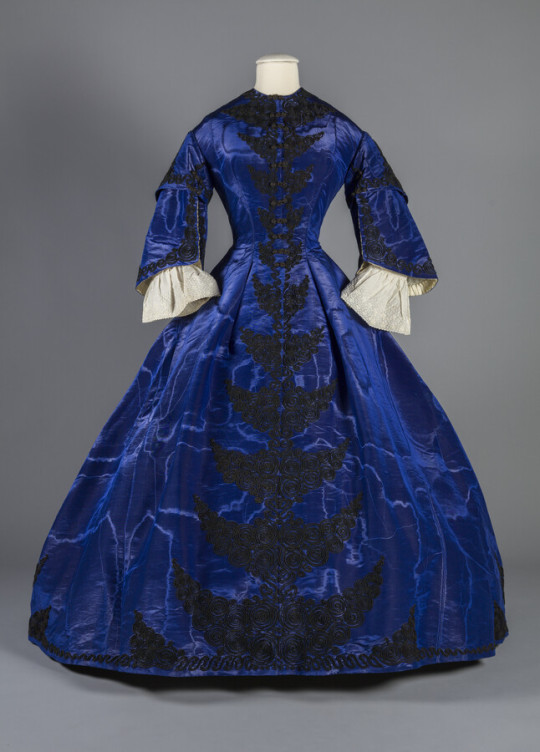
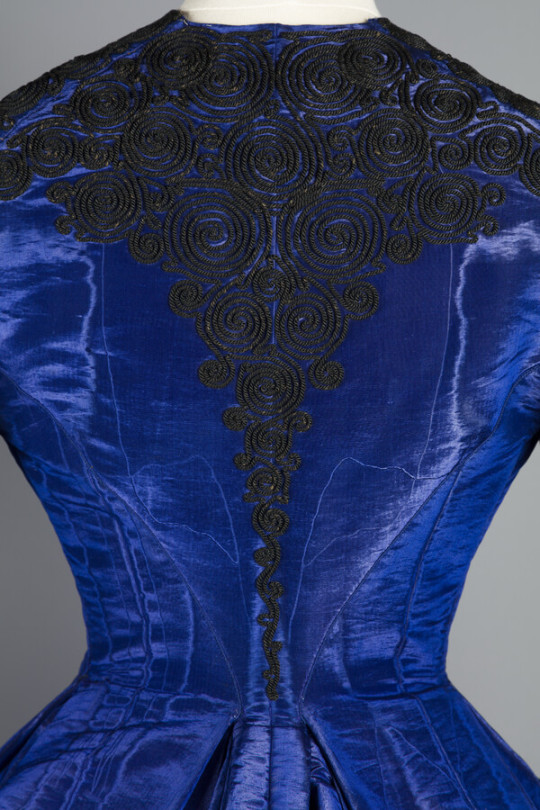
• Dress.
Date: ca. 1868
Medium: Watered silk faille, soutache cording, metal.
~ From the source: Margaretta Sophia Howard Ridgely (1824–1904) likely purchased this royal blue, silk moiré visiting dress during her travels through England and France in 1870. Black soutache cording embellishes the dress, which closes in the front with metal hooks and eyes and black thread-covered wooden buttons. Ridgely's husband, Charles Ridgely (1838–1872), did not survive the trip and passed away in 1872, upon which Margaretta entered mourning, wearing only blacks, greys, and later dull purples. This dress, so eye-catching and vibrant, would have been inappropriate to wear in mourning and was packed away, never to be worn again.
#fashion history#history of fashion#dress#fashion#19th century fashion#19th century#19th century dress#Margaretta Sophia Howard#ca. 1868#mourning
491 notes
·
View notes
Note
Hello there! I recently discovered your blog and it's really wonderful resource. I have a question and maybe you would be able to answer. From what I know the mourning garments are white, and I've seen some in movies or dramas. But I also saw many hanfu or hanfu-like costumes in dramas that predominately use white as a color for characters. So I am a bit confused, if what is considered mourning garment is much different (in style or in cut)? or the white clothes in dramas are just something modern and for aesthetics? I hope I'm making sense here.. Anyways, cheers and thanks in advance!
Unf, such amazing questions, I love it ❤️❤️
I'm going to answer this one very carefully because I don't want to get screamed at for "gatekeeping" 😆 Right off the bat I'm going to put a disclaimer:
Whatever show you enjoy, whichever actor/actress you like, you do you and have a good time. What I'm going to write is ONLY some trends in Chinese TV/movies over the past few decades, I'm not saying any show isn't "good", please don't hate me.
You're absolutely correct that historically, Chinese mourning clothes are white, but not just white, the material is also important. The actual term for mourning is "披麻戴孝" so if we break the words down:
披 (pi) = to wear on the body (like a cape) 麻 (ma) = hemp (fabric) 戴 (dai) = to wear, to hold, to have 孝 (xiao) = filial piety, show honour and love towards one's parents
So it's wearing white hemp and some sort of white fabric on the head to express one's respect for an elder. Mourning wear is only for those who are older than you (ex. parents, grandparents, older siblings, etc.), of a higher rank, or in some cases your superior (ex. solders in a battalion wearing mourning clothes when their captain passes).
I'll use some screenshots from the 1994 version of Romance of the Three Kingdoms as an example:

Pic 1-3: The emperor has passed away in this situation so everyone is in full mourning attire. His court (pic 1), his concubine (pic 2), his kid (pic 3). If you enlarge the image, you'll see the material they're wearing is quite rough-looking (best seen in pic 3, the other images' resolution aren't great).
Pic 4-6: In this funeral, the Wu Kingdom's Commander of the naval forces has passed away, so almost everyone is in full mourning because that's a very high rank.
Pic 5: You'll see the man on the right isn't in mourning because he's head of the Wu Kingdom, so his rank is higher than the Commander, therefore he doesn't wear mourning clothes.
Pic 6: This man is a visitor and frenemy of the Commander. He's coming from the Shu (Han) Kingdom and because they're not from the same Kingdom, there's no consideration of whose rank is higher or lower. Therefore, he's only worn a strip of white cloth over his hair out of respect (he technically doesn't even need to wear that). Now, obviously, even though he's not required to wear white hemp mourning clothes, it's not a good idea to show up in flashing pink or electric orange (very disrespectful), so he's gone with a soft, pale blue
Pic 7: In this image, a distant relative of the leader of the Shu (Han) Kingdom has passed away (at this point in the show the Kingdom hadn't been established, so he's only the head of a province). This particular relative is younger than everyone present, so; a) he's not ranked above them b) he's not older than them
Therefore, none of them are in full mourning, but they've tied a white cloth to their belt to express respect.
The man in blue, on the right, with the black hat is a visitor from the Wu Kingdom, so much like in Pic 6 he's coming to pay respect to someone not from his Kingdom (doesn't matter the rank) and not his senior) so he's not in mourning clothes (he doesn't even have a white cloth at his belt when he turns around).
So yes, white is traditionally a mourning colour but not all white coloured clothing is for mourning. If you're wearing a white silk robe with embroideries and designs, that's not considered mourning clothes.
Now, having said that, traditionally people still tried to stay away from full on, completely white outfits from head to toe. It's just not a lucky colour to wear. A jacket that's white, or a skirt that's white with a coloured border or some colourful accessories, not a big deal, but if you're going full white in everything...just, no, lol.
As for the Chinese period dramas/movies of today...that's a really deep well to dive through. I'll try to summarize it here and do more detailed posts later on.
TV dramas/movies are never 100% historically accurate, I'm sure everyone knows this, and we don't expect them to be. But for the Chinese entertainment industry it's been becoming less and less accurate in the last 20-25 yrs or so. In terms of clothing/make up/hair/set design/aesthetics in general, there's debate on why these changes have occurred (some say video games, some say foreign aesthetic influence, etc.) but the final result is a LOT of the costumes you see in period dramas today are very, very not historically accurate or even fitting to what is considered "traditional" Chinese aesthetics.
There's a LOT of these "Xianxia" shows going around, stories about immortals and "Gods", "xian/ 仙". I guess the character designers today feel that white somehow makes the characters feel more "immortal", more other-worldly, an imported aesthetic mainly from the West where "white" has been associated with "purity". There's actually growing push-back from the Chinese audience inside China against the character designs in recent years because people are beginning to feel like we're losing OUR aesthetic, these designs aren't what OUR Gods and immortals traditionally looked like. Here's a comparison:

On the left we have some shows and movies from the 80s and 90s, on the right we have more recent shows.
I'll be honest...some of the clothes on the right I barely consider "Hanfu". That's not to say they're not pretty, but the Hanfu influence in them is so small at some point I start thinking, "You're essentially wearing a large-sleeved dress...". In addition to the clothes, there's the hair, the makeup, even the buildings...they're...kind of East Asian styled but not really? I can't even say they're Chinese-styled because it's so generically East Asian some of these set designs.
Traditional Chinese aesthetics favoured bold colours, and the more power and wealth you had the larger the hair styles for women, with rich, beautiful accessories. Gardens and buildings are not minimalistic at all (that leans more Japanese style), rooms are not large and empty, even in large buildings each individual room are sectioned to be fairly small. There's a running joke on Bilibili (Chinese youtube) that the Heavens have gone bankrupt these days because the costumes, the hair, and buildings look so...bare xDD
Some audiences will say these shows are fiction anyway, not set in any particular time or country but...I mean, clearly they're not writing about a Western immortal or an African God, these stories are set in the frame of Chinese characters.
In any case, basically what I'm saying is, take the Hanfu you see in dramas/movies with a grain of salt. Sometimes with a whole bag of salt. It's absolutely no problem to like them, enjoy them, cosplay them, buy them, but don't link them to anything with history unless you do some research.
And again, not saying any show is good or bad, enjoy whatever you want, this is only an opinion regarding trends in Chinese period dramas/movies. If you'd like to see what a traditional Chinese image of "Heaven" and immortals look like, here's a video from the 1986 version of Journey to the West. This is a show I would say over 80% of Chinese people have seen, most of us watched it as kids. Many, many people think it recreates the image most Chinese people have of what our "Heaven" looks like:
Src: 嗑学家与挑剔学家 【86版西游记演出了中国传统神仙该有的样子】 https://www.bilibili.com/video/BV1DV4y1g73N/
#hanfu#汉服#china#中国#chinese hanfu#culture#history#fashion#clothing#historical clothing#披麻戴孝#86西游记#西游记#天庭破产了#买不起好衣服了哈哈哈#mourning clothes#journey to the west#chinese period dramas#守着金山要饭吃
154 notes
·
View notes
Text
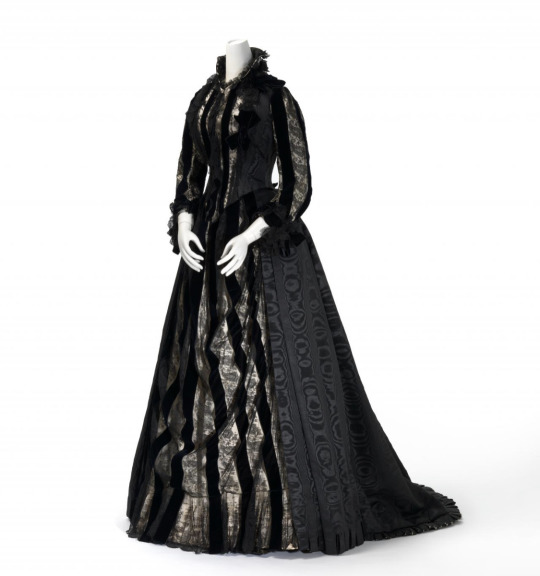
Mourning gown
c. 1885-1890
silk (moiré, velvet, satin, lace), cotton
MME Delbarre
National Gallery of Victoria, Melbourne
#Victorian fashion#mourning gown#Victorian#victorian era#fashion history#historical fashion#history of fashion#historical clothing#frostedmagnolias#black
595 notes
·
View notes
Text
i just want to remind everyone that, since the grishaverse is kinda sorta based on the victorian era, and since wealthy victorian families dressed their toddlers (girls or boys) in dresses, and wylan was very wealthy growing up, there are definitely family portraits in existence of baby wylan wearing one of those goofy ass victorian baby dresses
#i could yap about victorian era fashion for DAYS#i did an entire three month school project on it and i still feel like i don't know enough#god it's just so cool#there were so many intricacies#hair lockets ?????#mourning clothes ????#the absolute ridiculousness of mourning wear for women ?????#the slow integration of color the later the mourning period#it's just so cool to me#anyway soc fandom are we seeing the comedic potential for baby wylan in one of those stupid ass baby dresses#cause i sure am#six of crows#six of crows fandom#soc#wylan van eck#soc fandom
471 notes
·
View notes
Text

Le Moniteur de la Mode. / Journal du Grand Monde.
Caption: ‘Chapeau et Bonnet de Barénne & C"ie Chale en Drap- Brodé de Velours et Robe en Velours écossais de la Maison Popelin-Ducarre.’
print maker: Lecomte
after drawing by: Jules David (1808-1892)
Paris, 1844
(x)
#vintage fashion plates#french fashions#ilovethis#vintage fashion#victorian fashion#fashion history#rijksmuseum#mourning fashions#green and black#purple dress#mauve
66 notes
·
View notes
Text


𝔪𝔬𝔲𝔯𝔫𝔦𝔫𝔤 𝔰𝔱𝔞𝔯
#photos by pixelderg @ twitter#fursuit#dog#possum#furry#photography#animals#howdy yall#mourning star#going to be sharing fursuits photos and fashion stuff here
2K notes
·
View notes
Text

L'Art et la mode, no. 45, vol. 31, 5 novembre 1910, Paris. Robe de deuil en drap et crêpe. Broderie de petites perles mates au corsage. Imp. d'art L. Lafontaine, Paris. Bibliothèque nationale de France
#L'Art et la mode#20th century#1910s#1910#on this day#November 5#periodical#fashion#fashion plate#color#bibliothèque nationale de france#dress#mourning#hat#collar
170 notes
·
View notes
Text

Silk and Cotton Mourning Dress, 1899
From the National Gallery of Victoria
395 notes
·
View notes
Text






























Photos from last month at the Lazaro Galdiano museum for a event! 😊
#nips photos#personal#historical reenactment#historical fashion#edwardian era#edwardian#We look like we are in mourning lmao it was unintentional 😭#look at Nicolas' original Seseña traditional spanish cape!!#did we wear black just so he could wear this cape? mmmmmayhaps#nips blogs
336 notes
·
View notes
Text
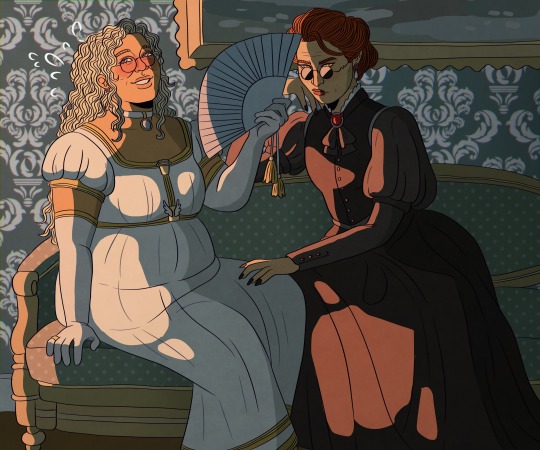
a clandestine meeting interrupted c. 1861. the ladies crowley and fell found conversing unattended in the parlour without chaperone nor candlelight, who both seemed flushed and annoyed to be found out by other party attendants
🖼️ kofi link in bio if you’re feeling generous 🖼️
#my art#good omens#ineffable wives#aziraphale#crowley#HC that even tho its the 19th century az is always behind the fashion trends#so shes in regency attire#whereas#crowley has adopted mourning attire to be more edgy#az thought they were having a Moment which is why shes flustered
900 notes
·
View notes